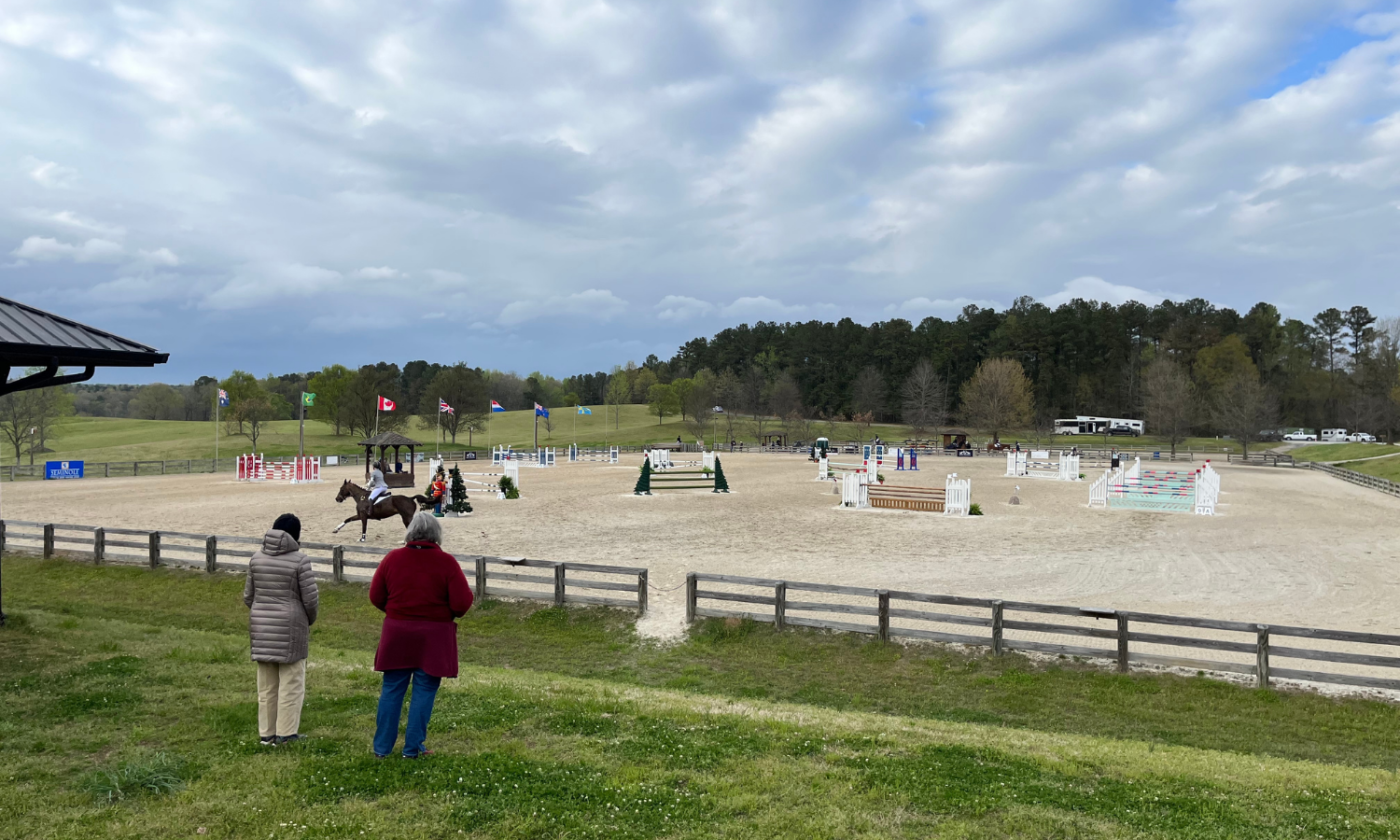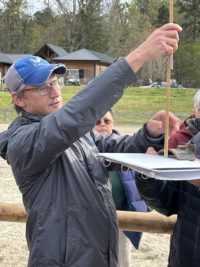Renew Your USEA Membership for the 2023 Season Today LEARN MORE

Annemarie Cochrane is a USEF "r" eventing judge who resides in Elverson, Pennsylvania. She recently attended the 2022 USEA East Coast Continuing Education Clinic (CEC) & "R" and "S" Promotion Training Program hosted by Chattahoochee Hills in Fairburn, Georgia. Read her account of the two-day seminar below!
As a relatively new USEF "r" eventing judge, I was not exactly sure what to expect for my first USEA Continuing Education Clinic, but I returned home inspired, excited, and ready to officiate in 2022. Held at the end of the second week of April at Chattahoochee Hills, just outside of Atlanta, Ga. the two-day seminar was action-packed. All the participants which included judges, cross country designers, and technical delegates were treated to a plethora of invaluable content. Gretchen Butts, Marc Donovan, Marilyn Payne, Morgan Rowsell, Sue Smithson, and Wayne Quarles were our dedicated and very knowledgeable panelists. How lucky we were to have such an experienced group who eagerly shared their knowledge.
Prior to arriving at the beautiful facility, we were required to do homework, which included online modules that covered dressage, show jumping, and general rules. We also watched webinars on cross-country topics and handed in a self-evaluation. These pre-seminar tasks, which seemed a little tedious at first, ended up being helpful in preparing us for the large content ahead.
All 40 of the participants arrived at Chattahoochee Hills on Thursday morning. Butts, Payne, Smithson, and Quarles had the job of gathering us together so we could go through brief introductions, and they could point us in the direction. Yes, it was a bit like herding cats but in the end, we all got to where we needed to be. Each licensed individual was required to cover certain topics specific to their license, so judges had a certain format to cover while technical delegates (TDs) and course designers had other areas of concentration.
"r" and "R" judges spent a good portion of the first day discussing scores, reviewing test movements, and then individually scoring movements aloud from videos. We also reviewed the new 2022 derssage tests and the new score for harmony at the end of each test. There are no longer four collective marks at the end of the test. We now just have harmony with a coefficient of two. We were taught that harmony should not be scored by using an average of the movements. Harmony is an independent score and its intent is to reward good riding when the judge sees a pleasant partnership between horse and rider. Harmony is an exciting new addition to the eventing tests and it should make many riders happy.
In the afternoon, we reviewed some presentation slides over show jumping and discussed course design, rules, jump material, and issues that could occur during a round. We covered what is appropriate at each level and what the designer is looking for. Unlike a jumper course, an eventing show jumping course is designed to show competence rather than determine a winner. The goal of the jump courses, whether they be show jumping or cross-country, is to help train the horse.

At the very end of the first day, we were treated to a course walk with Donovan who was the show jumping course designer that weekend. Despite the bitter cold and windy evening, it was insightful to walk the one-star course and gain his perspective on what he was trying to achieve from each horse and rider. Donovan’s course was balanced with the appropriate amount of turns, verticals, and oxers all with correct distances. As we talked about each fence, we assisted him in changing the height from the two-star level to the one-star level. We measured the height and width and made changes in rails or planks where deemed necessary. When a course is considered truly good, the designer is often compared to a musician. From what I saw, Donovan is a maestro.
On Saturday, we broke into groups of four and five where we delved into different topics, after which each of us presented something back to the group at large. These topics ranged in format from rules, safety, communication between organizers, officials, volunteers, abuse, yellow cards, and much more. It was an interactive and team approach on how to re-educate oneself and the group on rules and important aspects of an event. This generated some interactive discussions between the panelists and participants.
After lunch, my group headed out for a cross-country walk with Rowsell. Rowsell’s enthusiasm and passion for his job were evident as he shared all aspects of what goes into designing and building a safe and appropriate course. He believes that all courses should be built to the standard of each level, and it is an injustice not to follow the guidelines. As we walked the one-star course there was discussion on fence types, what a horse sees at each fence, and how to make something potentially jump better for the horse by altering the material ever so slightly. This can be done by adding flowers or bushes to the fence, painting a rail, or moving a ground line slightly. We discussed take-off and landing issues, terrain, flags, and frangible devices. As President of the Ground Jury or as the TD, it is so important to think like a rider and always consider how the horse sees the jump as they are galloping to it.

We finished the last hour or so discussing various topics. Although there was very little time to take a breath during the two days and the weather was cold, I found the seminar hugely beneficial. I enjoyed meeting other officials from all over the east coast. If you are interested in becoming an official, please consider it. Our sport needs officials who have the best interest of the horse at the forefront, who are passionate, diplomatic, and who can work well in a team. If that sounds like you, come join us!
Want to learn more about becoming a USEA licensed official? Check out the programs and initiatives offered by the USEA here.